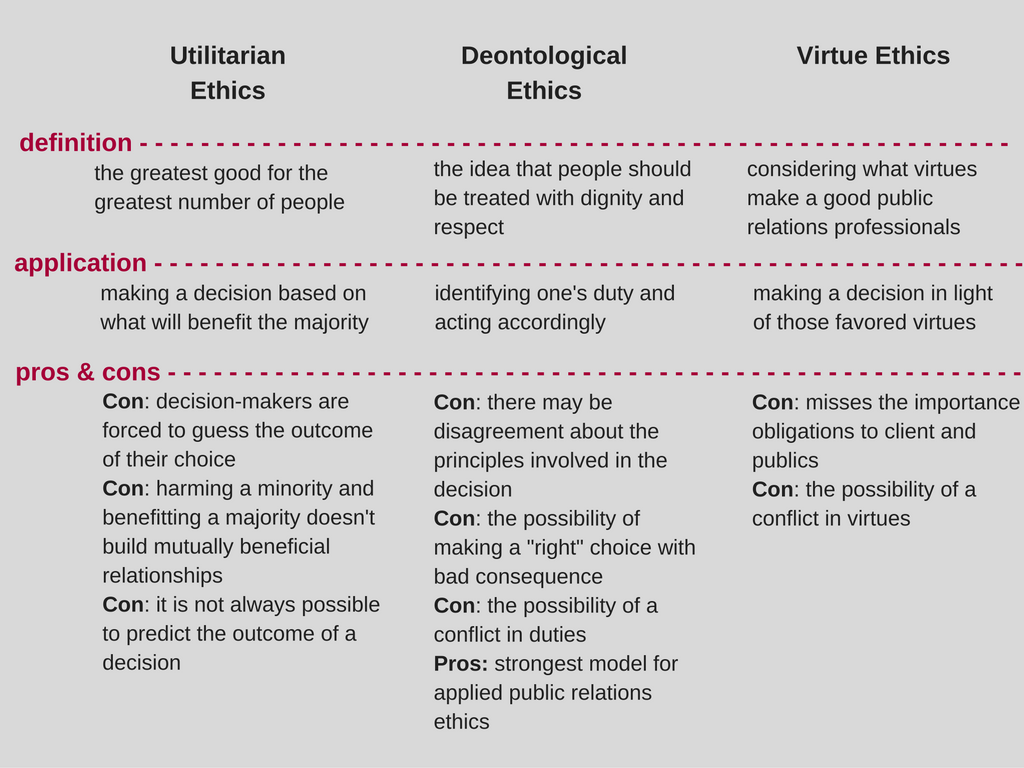Explain the Difference Among Guidelines Principles and Theories
Over the years several management theories have evolved which can be categorized. Crosby an engineer is known for accessing the concept of Zero Defects which was produced at a company he once worked for.

Difference Between Theory And Principle Compare The Difference Between Similar Terms
Develop a science for each aspect of work.

. The Father of Scientific Management Frederick Taylor attempted to use systematic study in order to find the single best way of doing a task. Method refers to a process. Ethics is the branch of philosophy that deals with morality and how it shapes behavior.
Also study and analyze it to find the. What are accessibility guidelines. Eventually Crosby became the Corporate Vice President of the ITT Corporation and the Director of Quality.
Consequentialism deontology and virtue ethics. In the fields of pragmatics and semantics among others relevance theory is the principle that the communication process involves not only encoding transfer and decoding of messages but also numerous other elements including inference and context. Discuss progress from organizations that are taking the lead.
Crosbys mantra was Quality is Free. Management Theories Frederick Taylor. The quality principle by Philip P Crosby.
State a few example guidelines. In certain cases the right and good as well as the ethical rules and values are sometimes common to various ethical theories. Theories models and frameworks in the general literature.
Approach can refer to the theoretical framework in general. A principle is a statement that is assumed true and is a generalization of an existantial true statement less known as dictum. The principles of the theories can be used as guidelines to help select instructional tools techniques and strategies that promote learning.
Difference Between Approach and Method Definition. Approach is the way in which something is approached. Generally a theory may be defined as a set of analytical principles or statements designed to structure our observation understanding and explanation of the world 29-31Authors usually point to a theory as being made up of definitions of variables a domain where the theory applies a set of relationships.
The difference principle governs the distribution of income and wealth positions of. Approach can refer to the direction or angle. These rules have priority over the difference principle.
Internalising the principles we believe explain the nature-of-things is perhaps the single most powerful factor shaping society. 39 Meaning of a Counselling Theory Counselling theory is a frame of reference that establishes sound philosophical and conceptual principles on which to base ones practical advice to the client. The first principle requires that citizens enjoy equal basic liberties.
A theory is a statement that is assumed true and is non-contradictory to true statements less known as axiom. However theories are explanation and interpretations of why or how design should work. Principles are essentially guidelines which are treated as fact for the type of interface being designed.
Similarities and Differences in Ethics. Learning theories are an organized set of principles explaining how individuals acquire retain and recall knowledge. The classical theory came into public in the 19 th century.
Deontology or duty utilitarianism rights and virtue. It is also called the principle of relevance. I will describe all of them briefly.
The first part of the second principle requires fair equality of opportunity. By studying and knowing the different learning theories we can better understand how learning occurs. Different branches of the study of ethics look at where our views of morality come from and how they shape our everyday lives.
Guidelines - low-level focused advice about good practices principles - mid-level strategies or rules to analyze and compare design alternatives theories - high-level widely applicable frameworks to draw on during design and evaluation. We would have a completely different society from that which we have today. There are four major ethical theories.
The key difference between classical and neo classical theory is that the classical theory assumes that a workers satisfaction is based only on physical and economic needs whereas the neoclassical theory considers not only physical and economic needs but also the job satisfaction and other social needs. What if the principles instead were. The main aim of any ethical theory is to do what is right and good since it involves moral rules or acting based on specific ethical values.
He laid down the following four principles of management for all managers. Into three styles of management Classical Neoclassica. Up to 24 cash back reinforcement theory goal-setting theory the reinforcement theory is defined as the theory that behavior is a function of its consequences that behaviors followed by positive consequences will occur more frequently and that behaviors followed by negative consequences will occur less frequently.
Guidelines specific and practical prescribe good practices caution against dangers Principles mid-level Analyze and compare design alternatives Theories and models high level describe objects and actions with consistent terminology make predictions regarding times for pointing reading or typing. Survival of those who cooperate for the greater good selection guided by a moral sense etc. The goal of counselling theories is to change clients behaviour behaviour modification either abnormal or unsatisfactory.
Method is the way in which something is done. The difference principle cannot justify policies or institutions that abrogate them. The purpose of this article is to explain different ethical theories and compare and contrast them in a way thats clear and easy for students to understand.
There are three major categories of ethical systems that students typically learn about in philosophy classes.

Pin On Chronic Pain Management

Difference Between Theory And Principle Compare The Difference Between Similar Terms

No comments for "Explain the Difference Among Guidelines Principles and Theories"
Post a Comment